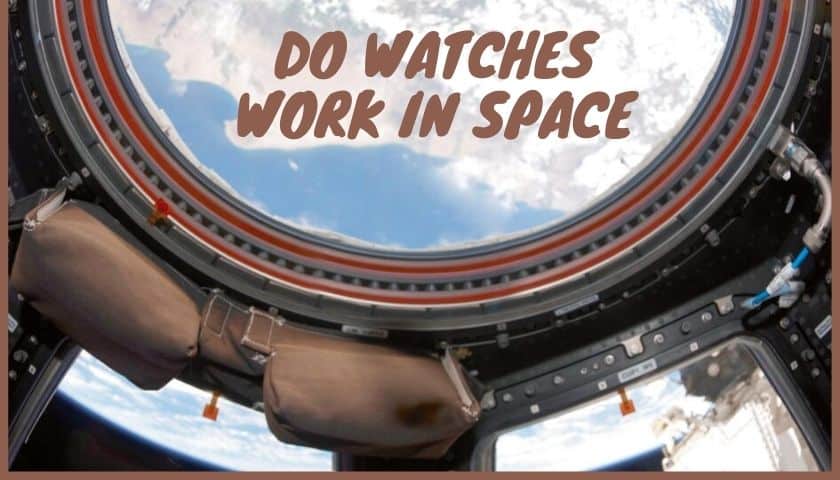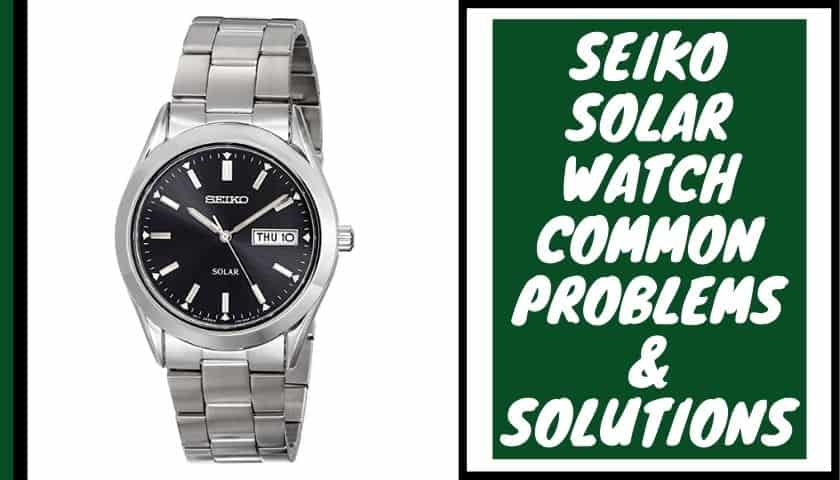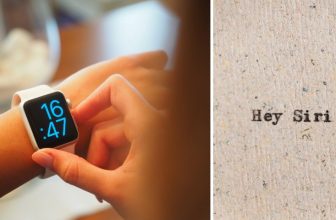Do Watches Work in Space | What is the Fact Behind

As an Amazon Associate, I earn from qualifying purchases.
Watchmakers may say that watches function in a vacuum without any problems. But you may have heard that watches don’t work in space and astronauts have encountered this issue. So, you might be wondering why is that?
This is due to one simple reason – gravity. Being in space means that you are outside of Earth’s atmosphere and feeling a gravitational pull. The time on a watch on Earth is regulated by gravity changing electrons inside the quartz crystal at a constant rate, which can’t happen without an atmosphere. If you ever think that “Do watches work in space?” you need to read this article to end.
Do Watches Work in Space – What Happens If You Wear it in Space?
There are only three significant forces in the universe. Which are – gravity, electromagnetism, and weak nuclear force. All these three forces act over different areas. Gravity affects everything all around you. But its effect is negligible while you are on the ground. The electromagnetic force affects your very body. It will also push a watch around on your arm. In space, it doesn’t matter because there isn’t any air to create wind up from.
The force of the weak nuclear force remains constant on the earth. It doesn’t have any effect in space. In space, the force of gravity is not strong enough to keep you in orbit.
The two combined to give an effect called Centripetal Force. It is what keeps satellites orbiting the earth and keeping us going as well. The size of this force depends on the distance from the earth. But it is always a net negative (meaning it pulls you away). This explains why satellites must move faster than the speed of sound. (to maintain orbit at a given height)
This is also why your watch may not be keeping good time while in space. Because of the friction between the hands and the face. This friction creates friction between two metal surfaces and helps keep accurate time.
In space, this force is almost completely absent. And this explains why watches may not be operating in the proper way there.
Timekeeping devices produce effects called beats during acceleration or deceleration. This is generally not a problem when you use it while on earth. But in space, this effect will amplify. The result could be over an hour lost in time throughout a single orbit.
If this were to happen, both astronauts and satellites would need new systems to keep track of time. (To maintain accurate timekeeping devices.)
The only solution proposed right now is using atomic clocks for timekeeping. These are accurate but they need a massive power source to keep running continuously.
Because of this, NASA is trying to design a watch that keeps time well without the need for power. The watch only needs to run for a few hours before it starts back up again.
NASA is hoping this will decrease the amount of time lost in space. It’ll also improve communication with satellites. And help with other tasks aboard the ISS.
For now, it looks like astronauts may still have to rely on atomic clocks while they’re in space. (This will help them keep track of time. Especially while traveling in space.)
Since there are no watches that function in space, the answer is “no”. There are watches on the ISS, but they aren’t doing anything. The second hand is just spinning around waiting for someone to land.
With the force of gravity being nonexistent the power source for the watch will not keep it running. The second hand will randomly sweep around with no way to keep time.
Because the watch needs to be reset periodically and that is impossible in space. A watch will not operate in the vacuum of space.
A simple watch works because there is enough gravity on earth to keep it moving. But in space, without the force of gravity, a watch would not work. This is because a watch relies on convection between the hands and face to keep it accurate. Without this friction, a watch will not work accurately.
Other watches operate in space as well. Yet, they are not keeping time. The second hand of these watches will spin around with no purpose.
There are times when people wear a watch for hours and it does not run down. This is because there is enough gravity to keep it running while you’re on earth. But in space, there isn’t enough force to keep the watch going. And it will stop working after a few hours (when clocks get reset).
The Astronauts Who Wore Watch in Space
The list of astronauts who have worn watches in space is quite extensive. Including Felix Baumgartner, who wore a TAG Heuer. During his record-breaking jump from the edge of space.
GeorgiGrechko, a former cosmonaut also wore a watch while flying around in space.
He even filmed a commercial promoting Tag Heuer’s “Mission Galactic Tourbillon” watch.
But let’s be clear: just because these guys wore watches in space doesn’t mean they worked.
That’s because you can’t make a purpose-built timepiece work in space. Watches are pieces of machinery that have complications without the earth’s gravity. As such, if your watch is out from that gravitational force. It becomes physically impossible for it to continue functioning.
What Watches Work in Space?
Although regular watches don’t work in space, there are particular watches that perform effectively in space. Here we shared some watches that give accurate timing in space.
1. The space watches
You might associate watches with timepieces. But they can be quite functional in space. One thing that watches are fantastic for in space is keeping track of your oxygen levels. That determines how much you need to stay alive. There are ways in which the backup oxygen supply can be used to keep track of vital signs. A watch does this by using a very sensitive oxygen sensor. That measures how much oxygen you have down to one-tenth of a percent.
In the event there isn’t enough, it will stop wearing and the astronaut can take it off.
A U.S. space agency Dr. Barratt says that “Watches have gotten smaller. And more compact so they’re the best choice for storing temperature and pressure data.” Although there is a less technological way of keeping track of time in space. Watches can use for more than just telling the time.
When astronauts are in space they need to know two things. How fast they’re traveling, and when their next meal is going to be ready. Their meals need timing. So that they eat about every three hours. They need to know when they are going fast or slow so that they can determine when to apply thrust or pull back. They also use the watch in conjunction with their food supply.
Dr. Barratt explains how “The watch is very handy for tracking what time a meal is going to be ready.” This allows them to time their meals properly.
Another form of technology astronauts use in space relates to watches. It is the camera shutter. The cameras that astronauts take pictures with work differently than a standard camera. When you want to take pictures on earth, the camera lens is open the entire time.
But, in space, the astronauts’ cameras only open for a few milliseconds and then close right after. A watch can be used to control the shutter speed of a camera to make sure it takes good-quality photos. Despite all its technological advancements, it can be used for its original purpose. (telling time)
When it comes to space travel, a watch would be one of the most useful items you could bring. Not only are they useful in keeping track of your oxygen level, but they are also used to help track time. They also determine how fast you are going. Astronauts use their watches in conjunction with cameras. (to take pictures and control the shutter speed)
NASA’s watches can be used in space to accurately time intervals. NASA has many different watches for all its crew members in space.
2. The Omega Speedmaster Professional
This is a watch that looks very traditional. It has a round face and a leather band around it with two circular dials inside, which measures hours and minutes.
Inside this watch, there is the Lemania- movements 861. NASA uses this watch because it can withstand extreme temperatures. All the Omega Speedmaster Professional watches are available at the NASA store. Some people may think that these watches are expensive compared to other brands. But they are competent and worth having.
As the clock’s hands are gearing up, it causes the second hand to start ticking. The clocks’ mechanisms perform accurately for at least thirty days. Then they would change with new ones as their predecessors were returning home. During the flight mission, control checks and tests only five primary timing mechanisms. (when the time was approaching for an orbit correction maneuver)
Sun and Earth-based reference points can measure time and longitude in space. These points help the Space Shuttle’s computer to calculate the time at any location on Earth. The Computerized Control System uses a GPS timing signal to regulate its position. (in space)
3. GMT Watch
NASA uses the GMT watch to keep time onboard the Space Shuttle. Glashütte-Cortébert made the GMT watch and was first used in 1976.
One of the most important features of the GMT watch is that it allows a timely readout of time, date, and month. These are all read by pushing a button which is on the side of the watch. This makes this watch very helpful for mission managers. Who is trying to estimate when a shuttle might need to perform another mission.
4. The mechanical chronographs
NASA also uses several mechanical chronographs, made by Breitling. The watches that were used onboard past space shuttles happens to invent in 1964 and 2002.
The pro models were made between 1969 to 1986. The watches are the most accurate mechanical chronographs on the market. The watches were all tested by NASA and Mission Control experts. To make sure to be certain that everything worked properly while the shuttles were in space.
These Chronographs timing important procedures. Such as when astronauts will return from a spacewalk. Or will have enough fuel left in their tanks for re-entry into Earth’s atmosphere. They have also used time-critical procedures in the early days of space flight.
The chronograph was first used in 1972 and is also considered a very important feature of the watch. The chronograph’s primary function allows good timing and precision in various scientific activities. Such as when mapping the position of the sun or when testing out fuel cells. Astronauts tested The chronograph watch in space for two weeks before each mission. This watch’s known as the Breitling Chronograph Navitimer.
Last Words
The answer to the question that ‘Do watches work in space?” We can say that there are no problems with watches in space. But if you were to leave an ordinary watch in space, it would stop working. It’s because there is no gravity there to keep it going. A watch needs to be reset every couple of days or else it will not work as usual. Other watches can be reset from time to time, but they still rely on gravity (like a normal watch). Another thing is that a watch needs to tick for a few hours before it starts working again.
As an Amazon Associate, I earn from qualifying purchases.
- Do Smartwatches Need Data Plans | All Things to know - July 14, 2022
- How to Charge Apple Watch Without Charger - July 10, 2022
- The 7 Best Smartwatches for Small Wrists | 2022 Ultimate Guide - March 5, 2022







funny enough also computers work on quartz/diodes.
So how would those funcion in space?